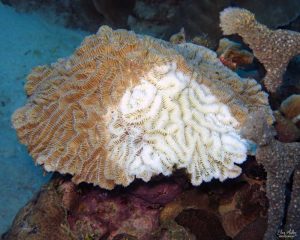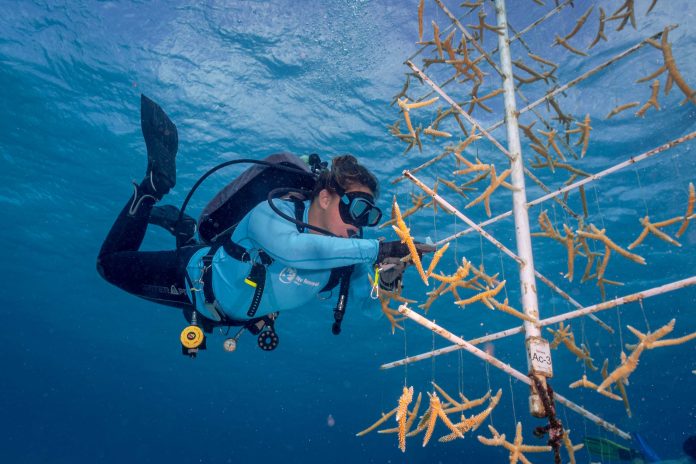WWF-NL launched an online exhibition on the history of corals in the Dutch Caribbean. Through a story map, visitors can engage interactively to learn more about the region, its reefs, their value, and what’s threatening them. It is also described how individuals and governments can contribute to the protection of coral reefs.
Coral reefs have highest biodiversity
It is widely known that corals provide food, income and protection to inhabitants of the Dutch Caribbean. The coral reef is a complex ecosystem that is believed to have the highest biodiversity of any ecosystem on the planet. Unfortunately, Dutch Caribbean reefs have lost significant area coverage and biodiversity due to many threats such as climate change and wastewater pollution.

Corals: then and now
WWF-NL created an online collection of information and imagery in a simple, clear and interactive way for teenagers and adults. This exhibition highlights how the reefs have changed over the years, the several threats that corals are facing, what is currently being done to protect them and what each person can do to protect corals.
Many conservation activities
A few of the conservation projects that are included in the exhibition are the work from Reef Renewal Bonaire, Reef Renewal Curaçao, Turning the Tide in Aruba and Intellireefs in St. Maarten. Also included are the sea urchin restoration projects in St. Eustatius and Saba, and RoffaReefs in Bonaire. The goal of RoffaReefs is to collect eggs and breed selected fish species that are important for maintaining the health of corals. Sea urchins are also essential grazers of reefs. Furthermore, WWF-NL shares easy tips for coral protection such as: don’t touch coral or feed animals, use reef-friendly sunscreen and avoid using single-use plastics.
Share your imagery
The online story map was made possible with the valuable contribution of scientists, universities and nature organizations that provided academic information and imagery. Local citizens also shared photos and videos from their personal collection, ranging from old to recent footage. WWF-NL invites organizations and individuals to continue submitting imagery from all six islands via caribbean@wwf.nl. The online exhibition ‘Historic Reefs of the Dutch Caribbean’ is a collection that will be regularly updated with new information and imagery.
Photo description:
1: Diver in Fuikbaai, Curaçao in 1955. Credit: Willem van de Poll, National Archive/ Photo collection van de
Poll
2. Healthy coral reef. Credit: Casper Douma
3. Restauration work of Reef Renewal Bonaire. Credit: Reef Renewal Bonaire
4. Coral disease. Credit: Ellen Muller




















